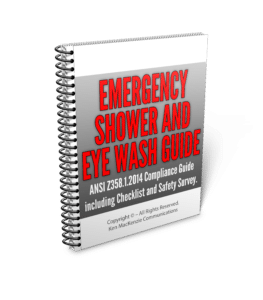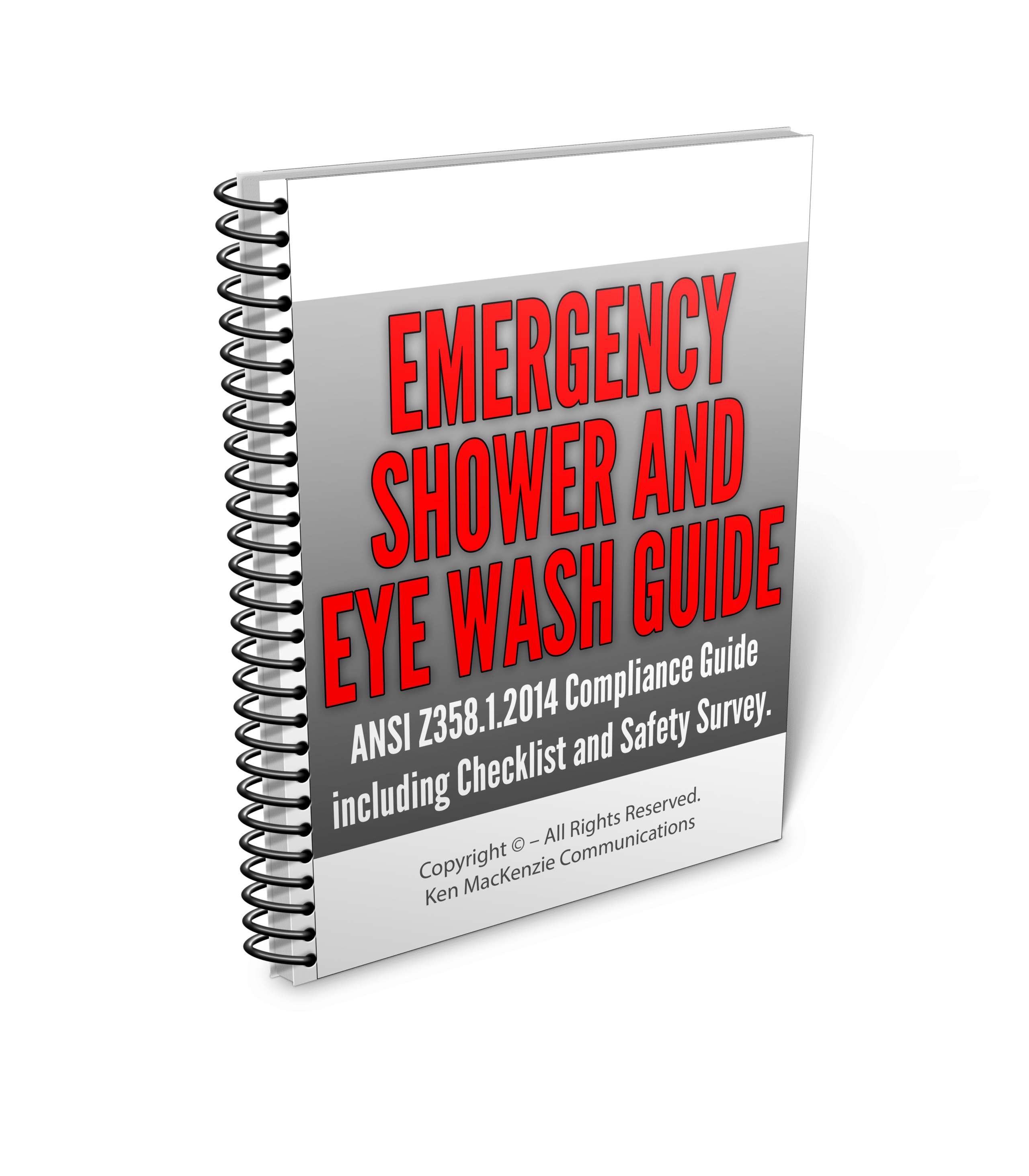Safety Shower Flow Rate | Eye Wash Flow Rate
Safety Shower Flow Rate Must be of Sufficient Flow
To comply with ANSI Z358.1, there must be a sufficient flow of water to flush the affected area completely.
Safety showers require a minimum supply of 20 gallons per minute for at least 15 minutes.
Eye washes (including self-contained models) require a minimum flow rate of 0.4 gallons per minute.
The flushing fluid must be at a velocity low enough to be non-injurious to the user. In addition, water should be tepid and valves must remain open without the use of hands.
The OSHA standard 29 CFR 1910.151(c) requires eyewash and shower equipment for emergency use where the eyes or body of any employee may be exposed to injurious corrosive materials.
Emergency Shower and Eyewash Stations:
A shower is required at fixed work areas or stations when substantial areas of the worker’s body may be exposed to large quantities of materials that are highly corrosive or highly toxic by skin absorption. The shower should also be designed so that it can be activated in less than 1 second, and it remains operational without the operator’s hand on the valve (or lever, handle, etc.).
Eye wash units must be provided in fixed work areas or stations when a hazard assessment or any other information indicates that an employee may reasonably be exposed to a substance that can cause corrosion or permanent tissue damage to the eyes.
All equipment needs to be inspected weekly to ensure that there is a flushing fluid supply and that the equipment is in good repair.
Location of the Eyewash or Safety Shower
Generally, the distance from the worker’s location to the device should not exceed 10 seconds walking distance.
The determinant factor is immediate eye irrigation within 10 seconds. The path must be unobstructed and cannot require opening doors or passing through obstacles unless other employees are
always present to help the exposed employee.
ANSI Z358.1 2014 | Emergency Shower & Eye Wash Guide
Training:
Employees must be trained on the hazards associated with the material, the location of the eyewash or shower facilities, and the proper procedure for flushing the eyes and skin.
How to Test:
1. Is the location of the emergency equipment well lit and identified with a highly
visible sign?
2. Is access to the shower free of obstructions from all areas of the laboratory or
hallway?
3. Flush shower for at least 10 seconds. Place a 5-gallon bucket underneath the
safety shower and a shower curtain around the shower head and inside the
bucket to catch all the water.
4. Is the water clear?
Plus these checks:
5. Evaluate for adequate flow.
6. Does the water continue to flow until the pull handle is turned off?
7. Is the plumbing free from leakage?
8. Promptly clean up any water that is spilled on the floor as a result of this
process. Any water collected can be emptied at the most convenient location
such as a sink, custodial floor sink or a floor drain.
9. Date and initial the weekly inspection log.
ANSI Z358.1 2014 | Emergency Shower & Eye Wash Guide


